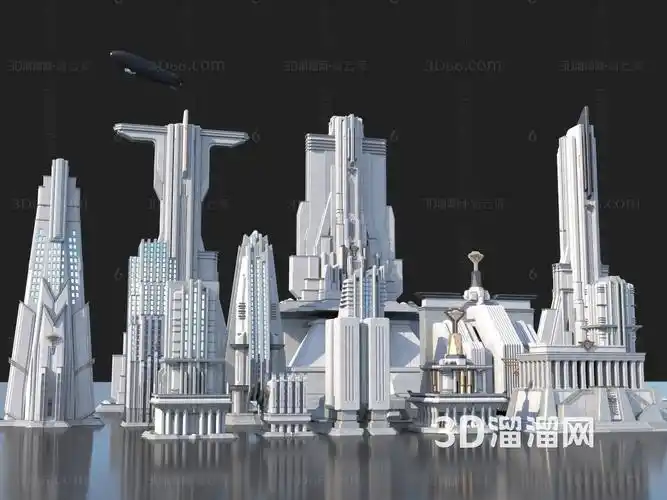
文章目录
- 一、系统架构设计
- 1. 核心组件架构
- 2. 指令处理流程
- 二、指令系统实现
- 1. 指令定义规范
- 2. 指令解析引擎
- 三、Unity3D实现示例
- 1. 指令驱动控制器
- 2. 复杂指令示例:装配动画
- 四、高级功能实现
- 1. 指令组合(宏命令)
- 2. 条件指令
- 五、性能优化方案
- 六、应用场景扩展
- 1. 工业装配指令集
- 2. 建筑可视化指令
- 3. 游戏交互指令
- 在这里插入图片描述
- 3D模型驱动原理详解
- 一、基础驱动原理
- 1. 变换系统(Transform System)
- 2. 骨骼动画驱动
- 二、物理驱动原理
- 1. 刚体动力学
- 2. 碰撞检测
- 三、着色器驱动
- 1. 顶点着色器处理流程
- 2. 材质参数驱动
- 四、高级驱动技术
- 1. 蒙皮网格实时变形
- 2. 程序化动画系统
- 五、性能优化原理
- 1. 实例化渲染
- 2. LOD系统
- 六、现代驱动架构
- ECS(实体组件系统)模式

指令驱动是3D模型交互和控制的核心机制,下面我将详细介绍一套完整的3D模型指令驱动系统的架构设计和实现方法。
一、系统架构设计
1. 核心组件架构
[指令输入层] → [指令解析引擎] → [模型操作层] → [3D渲染引擎]↑ ↑ ↑
[指令存储库] [状态管理模块] [模型数据池]
2. 指令处理流程
- 指令输入 → 2. 语法解析 → 3. 语义验证 → 4. 执行调度 → 5. 模型更新 → 6. 场景渲染
二、指令系统实现
1. 指令定义规范
// 基础指令接口
public interface I3DCommand
{string CommandName { get; }CommandExecutionResult Execute(SceneContext context);bool Validate(SceneContext context);
}// 示例:移动指令
public class MoveCommand : I3DCommand
{public string TargetModelId { get; set; }public Vector3 Offset { get; set; }public CommandExecutionResult Execute(SceneContext context){var model = context.GetModel(TargetModelId);model.Transform.Position += Offset;return new CommandExecutionResult(true);}
}
2. 指令解析引擎
public class CommandParser
{private readonly Dictionary<string, Type> _commandTypes;public CommandParser(){_commandTypes = Assembly.GetExecutingAssembly().GetTypes().Where(t => typeof(I3DCommand).IsAssignableFrom(t) && !t.IsInterface).ToDictionary(t => t.GetCustomAttribute<CommandAttribute>().Name);}public I3DCommand Parse(string commandText){// 示例:解析 "move model1 x=10 y=5 z=0"var parts = commandText.Split(' ');if(!_commandTypes.TryGetValue(parts[0], out var commandType))throw new InvalidCommandException();// 使用反射创建命令实例var command = (I3DCommand)Activator.CreateInstance(commandType);// 设置属性(实际实现应更健壮)for(int i = 1; i < parts.Length; i++){var keyValue = parts[i].Split('=');var prop = commandType.GetProperty(keyValue[0]);prop?.SetValue(command, Convert.ChangeType(keyValue[1], prop.PropertyType));}return command;}
}
三、Unity3D实现示例
1. 指令驱动控制器
public class CommandController : MonoBehaviour
{private Queue<I3DCommand> _commandQueue = new Queue<I3DCommand>();private Stack<I3DCommand> _undoStack = new Stack<I3DCommand>();void Update(){// 每帧执行一个命令if(_commandQueue.Count > 0){var cmd = _commandQueue.Dequeue();var result = cmd.Execute(CurrentSceneContext);if(result.Success){_undoStack.Push(cmd);UpdateSceneVisuals();}}}public void EnqueueCommand(string commandText){try {var cmd = CommandParser.Parse(commandText);_commandQueue.Enqueue(cmd);}catch(Exception ex){Debug.LogError($"指令解析失败: {ex.Message}");}}public void UndoLastCommand(){if(_undoStack.Count > 0){var cmd = _undoStack.Pop();cmd.Undo(CurrentSceneContext);UpdateSceneVisuals();}}
}
2. 复杂指令示例:装配动画
[Command("assemble")]
public class AssembleCommand : I3DCommand, IUndoable
{public string BaseModelId { get; set; }public string PartModelId { get; set; }public float Duration { get; set; } = 1.0f;private Vector3 _originalPosition;private Quaternion _originalRotation;public CommandExecutionResult Execute(SceneContext context){var baseModel = context.GetModel(BaseModelId);var partModel = context.GetModel(PartModelId);// 保存原始状态用于撤销_originalPosition = partModel.Transform.Position;_originalRotation = partModel.Transform.Rotation;// 启动协程执行动画context.StartCoroutine(AnimateAssembly(baseModel, partModel));return CommandExecutionResult.Async;}private IEnumerator AnimateAssembly(Model baseModel, Model partModel){float elapsed = 0;var startPos = partModel.Transform.Position;var startRot = partModel.Transform.Rotation;var targetPos = baseModel.GetAttachmentPoint("socket1").Position;var targetRot = baseModel.GetAttachmentPoint("socket1").Rotation;while(elapsed < Duration){partModel.Transform.Position = Vector3.Lerp(startPos, targetPos, elapsed/Duration);partModel.Transform.Rotation = Quaternion.Slerp(startRot, targetRot, elapsed/Duration);elapsed += Time.deltaTime;yield return null;}}public void Undo(SceneContext context){var partModel = context.GetModel(PartModelId);partModel.Transform.Position = _originalPosition;partModel.Transform.Rotation = _originalRotation;}
}
四、高级功能实现
1. 指令组合(宏命令)
[Command("macro")]
public class MacroCommand : I3DCommand
{public List<I3DCommand> SubCommands { get; } = new List<I3DCommand>();public CommandExecutionResult Execute(SceneContext context){foreach(var cmd in SubCommands){var result = cmd.Execute(context);if(!result.Success) return result;}return new CommandExecutionResult(true);}
}
2. 条件指令
[Command("conditional")]
public class ConditionalCommand : I3DCommand
{public string ConditionExpression { get; set; }public I3DCommand TrueCommand { get; set; }public I3DCommand FalseCommand { get; set; }public CommandExecutionResult Execute(SceneContext context){bool condition = EvaluateCondition(ConditionExpression, context);return condition ? TrueCommand.Execute(context) : FalseCommand.Execute(context);}private bool EvaluateCondition(string expr, SceneContext context){// 实现条件表达式解析// 示例: "model1.position.x > 10"return false; // 实际应返回解析结果}
}
五、性能优化方案
-
指令池技术:
public class CommandPool<T> where T : I3DCommand, new() {private Stack<T> _pool = new Stack<T>();public T Get(){return _pool.Count > 0 ? _pool.Pop() : new T();}public void Return(T cmd){cmd.Reset(); // 命令实现重置方法_pool.Push(cmd);} } -
并行执行优化:
public class ParallelCommand : I3DCommand {public List<I3DCommand> Commands { get; } = new List<I3DCommand>();public CommandExecutionResult Execute(SceneContext context){Parallel.ForEach(Commands, cmd => cmd.Execute(context));return new CommandExecutionResult(true);} } -
指令预编译:
- 将常用指令序列预编译为二进制格式
- 运行时直接反序列化执行
六、应用场景扩展
1. 工业装配指令集
attach partA to baseB
rotate joint1 angle=90 duration=2.0
check clearance partA partB
2. 建筑可视化指令
create wall length=5 height=3 material=brick
place window at wall1 position=2.5
set lighting intensity=0.8 color=#FFEEDD
3. 游戏交互指令
character moveTo x=10 y=0 z=5 speed=2
npc playAnimation wave duration=3
camera follow target=player distance=5
这套指令驱动系统可以灵活扩展到各种3D交互场景,通过标准化指令接口和强大的解析引擎,实现复杂的3D模型控制流程。
3D模型驱动原理详解
3D模型驱动是指通过程序化方式控制3D模型的各种属性和行为,是现代3D应用开发的核心技术。下面我将从底层原理到高级应用全面解析3D模型驱动的工作机制。
一、基础驱动原理
1. 变换系统(Transform System)
核心矩阵运算:
ModelMatrix = Translation × Rotation × Scale
- 平移(Translation):
T = | 1 0 0 tx | | 0 1 0 ty | | 0 0 1 tz | | 0 0 0 1 | - 旋转(Rotation):围绕各轴的旋转矩阵组合
- 缩放(Scale):对角线矩阵
Unity示例:
transform.position = new Vector3(x, y, z);
transform.eulerAngles = new Vector3(pitch, yaw, roll);
transform.localScale = new Vector3(width, height, depth);
2. 骨骼动画驱动
蒙皮矩阵计算:
VertexFinal = ∑(Weight_i × BoneMatrix_i) × VertexOriginal
- 每个顶点受1-4根骨骼影响
- GPU通过着色器实时计算
关键帧插值:
Quaternion.Lerp(frameA.rotation, frameB.rotation, t);
Vector3.Lerp(frameA.position, frameB.position, t);
二、物理驱动原理
1. 刚体动力学
牛顿-欧拉方程:
F = m × a
τ = I × α + ω × (I × ω)
- Unity Rigidbody实现:
rigidbody.AddForce(Vector3.forward * thrust);
rigidbody.AddTorque(Vector3.up * turnSpeed);
2. 碰撞检测
包围体层次:
- Sphere:
(x-x₀)² + (y-y₀)² + (z-z₀)² ≤ r² - AABB:
minX ≤ x ≤ maxX && minY ≤ y ≤ maxY && minZ ≤ z ≤ maxZ - OBB: 基于旋转后的坐标轴检测
三、着色器驱动
1. 顶点着色器处理流程
// HLSL示例
void vert(inout appdata_full v)
{v.vertex = mul(UNITY_MATRIX_MVP, v.vertex);v.normal = mul(_Object2World, float4(v.normal, 0)).xyz;
}
2. 材质参数驱动
material.SetColor("_MainColor", new Color(r, g, b));
material.SetFloat("_Metallic", metallicValue);
四、高级驱动技术
1. 蒙皮网格实时变形
GPU计算着色器示例:
[numthreads(64,1,1)]
void CSMain (uint3 id : SV_DispatchThreadID)
{int vIndex = id.x;float4 pos = _BaseMesh[vIndex];float4 finalPos = 0;for(int i = 0; i < 4; i++){int boneIdx = _BoneIndices[vIndex][i];float weight = _BoneWeights[vIndex][i];finalPos += mul(_BoneMatrices[boneIdx], pos) * weight;}_OutputMesh[vIndex] = finalPos;
}
2. 程序化动画系统
IK解算示例:
void SolveCCDIK(Transform[] bones, Vector3 target, int iterations)
{for(int i = 0; i < iterations; i++){for(int b = bones.Length-1; b >= 0; b--){Vector3 toTarget = target - bones[b].position;Vector3 toEnd = bones[bones.Length-1].position - bones[b].position;Quaternion rot = Quaternion.FromToRotation(toEnd, toTarget);bones[b].rotation = rot * bones[b].rotation;if((bones[bones.Length-1].position - target).sqrMagnitude < 0.01f)return;}}
}
五、性能优化原理
1. 实例化渲染
Graphics.DrawMeshInstanced(mesh, submeshIndex, material, matricesArray, count, properties, castShadows, receiveShadows);
2. LOD系统
void UpdateLOD()
{float dist = Vector3.Distance(camera.position, transform.position);int lodLevel = Mathf.FloorToInt(dist / lodDistanceInterval);currentMesh = lodMeshes[Mathf.Clamp(lodLevel, 0, lodMeshes.Length-1)];
}
六、现代驱动架构
ECS(实体组件系统)模式
// 定义组件
public struct TransformComponent : IComponentData
{public float3 Position;public quaternion Rotation;public float3 Scale;
}// 定义系统
public class RotationSystem : SystemBase
{protected override void OnUpdate(){float deltaTime = Time.DeltaTime;Entities.ForEach((ref TransformComponent transform, in RotationSpeed speed) => {transform.Rotation = math.mul(math.normalize(transform.Rotation), quaternion.AxisAngle(math.up(), speed.RadiansPerSecond * deltaTime));}).ScheduleParallel();}
}
3D模型驱动技术的选择取决于具体应用场景,游戏开发常用Unity/Unreal引擎的现成组件,工业仿真等专业领域则需要更底层的数学实现。理解这些核心原理有助于开发高性能、高保真的3D交互应用。







